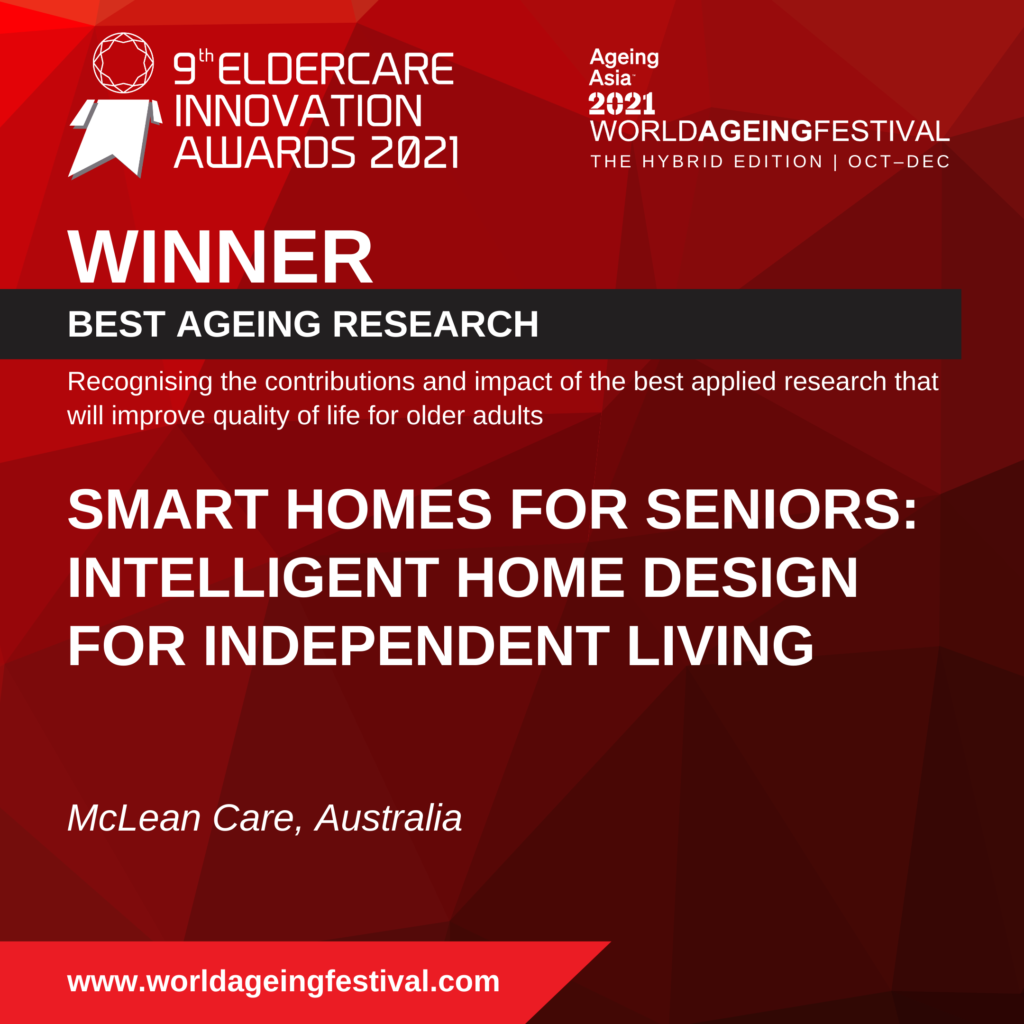Contemporary research confirms that technology can support positive ageing and create increased opportunities to age in place without loss of independence. Smart devices are expected to be used as preventative health measures, to address social isolation, reduce and respond to accidents, support the work of both formal and informal carers, improve access to health services, and reduce caring costs[1] [2] [3]. To date, the majority of research has focused on barriers to technology adoption or user attitudes towards particular technologies.
Affordable and reliable smart home device technologies have only been available in recent years. As these new technologies have become more widely-available, there is a growing interest in understanding how people use smart home technologies in their everyday lives. For example, researchers have explored how the use of new technologies might depend on the support of family or friends who help to install or fix new devices[4]. This research suggests that with appropriate assistance, smart home devices can support older people around the home and provide the potential to allow them to live independently in their own homes for longer.
Based on this background research, McLean Care, in partnership with Deakin University and Monash University, trialled the use of easily installed smart devices in the homes of older people living independently in regional New South Wales. The devices include smart power plugs, digital voice assistants, smart light bulbs and robotic vacuum cleaners. They are ‘plug and play’ smart home technologies that are easy to remove if needed.
The smart device trial and research activities were conducted between November 2019 and June 2020. The aims of this project were to:
- Understand how smart home devices can support older people in improving wellness outcomes and living independently in the home.
- Evaluate the benefits, opportunities and challengesof incorporating smart home devices into older people’s homes and lives.
- Understand the usability challenges, expectations, hopes and anxieties older people have of smart home devices in assisting them to live more independently and improve their wellness and wellbeing.
The trial involved four key components.
- McLean Care recruited 22 older households and provided them with a wide range of commercially available ‘off-the-shelf’ smart home devices from different vendors and with diverse functionalities.
- Deakin University collected electronic data from the different devices to analyse what was used and how.
- Monash University undertook ethnographic research (interviews, home visits, video tours and technology demonstrations, observations, follow-up phone calls) to document and understand participants’ experiences with the technologies.
- McLean Care collected reviews from the participants on the devices that were trialled and published them on a user review website. This is intended as a reference for other older Australians who may be considering using similar devices in their own homes.
The project delivers significant insights for older Australians, the Department of Health, aged care service providers, smart technology designers, and researchers by capturing the experiences of older Australians’ use of emerging smart home technologies.
Summary Project Report and Preliminary Findings
Project Report and Final Findings – February 2021

[1] Demiris, G. & Hensel, B. K. 2008. Technologies for an aging society: a systematic review of “smart home” applications. Yearbook of medical informatics, 17, 33-40.
[2] Liu, L., et al. (2016). “Smart homes and home health monitoring technologies for older adults: A systematic review.” International Journal of Medical Informatics 91: 44-59.
[3] Deen, M 2015, ‘Information and communications technologies for elderly ubiquitous healthcare in a smart home’, Personal and Ubiquitous Computing, vol. 19, no. 3-4, pp. 573-599.
[4] Greenhalgh, T., et al., What matters to older people with assisted living needs? A phenomenological analysis of the use and non-use of telehealth and telecare. Social Science & Medicine, 2013. 93: p. 86-94.